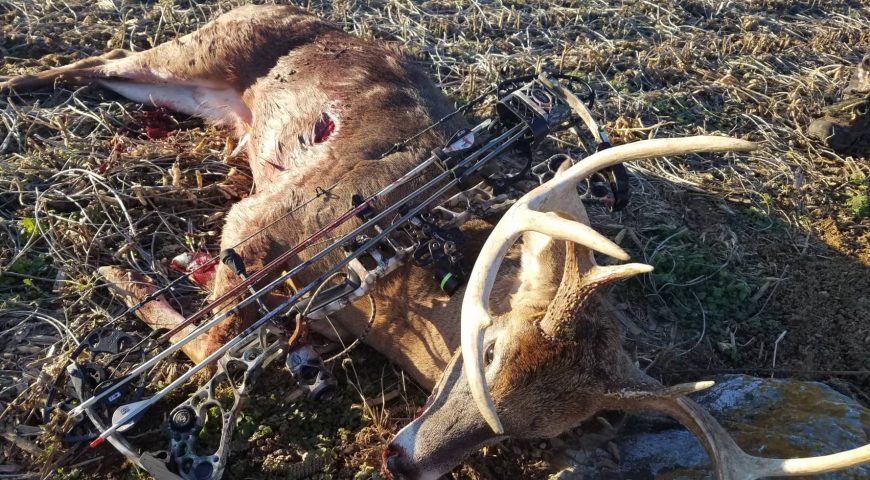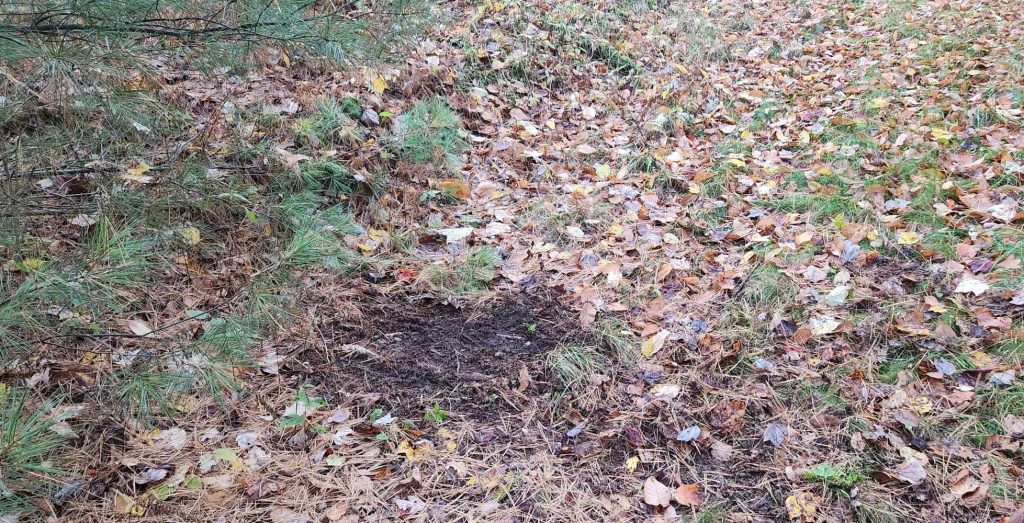
6 Rut Hunting Tactics for Archery Hunters
Rut Hunting Tactics for Better Bow Hunting
The whitetail deer rut is one of the most anticipated times for archery hunters. Big, mature bucks appear from darkness and roam throughout the day seeking out as many does as they can find. The whitetail rut is not a mystery. Thousands of videos and articles on the subject are available to every hunter. However, it is how you put those rut hunting tactics to use that separates lucky versus great archery hunters.
Understanding the Whitetail Deer Rut in Detail
The rut, or breeding season, is marked by increased deer activity, making it an opportune time for hunters. Generally, the whitetail rut occurs in the October-November months. Timing varies geographically, however, behavioral and physiological changes in deer are your clue that something is happening.
The whitetail deer rut is a series of stages that make up the entire breeding season. Understanding these different stages and deer rutting behavior is the key to planning successful archery hunts.
5 Main Stages of the Whitetail Rut
- Pre-Rut: The first stage is where bucks begin marking their territory, scraping the ground, rubbing trees with their antlers, and establishing dominance among themselves. In addition, smaller bucks will begin to lightly spar to test their strength and hierarchy.
- Seeking Phase: As the rut approaches, bucks become more active in seeking does. They cover a lot of ground, searching for does in estrus, checking scrapes and scent-marked areas left by other bucks. This phase involves increased movement and leads to aggressive behavior among bucks competing for does.
- Chasing Phase: This is when the rut intensifies. Bucks actively pursue does in estrus. They may be seen chasing them over longer distances, displaying more aggressive behavior as they attempt to court the females. This phase can involve more vocalization and physical exertion.
- Breeding Phase: During this stage, the does that are in estrus come into peak fertility, and mating occurs. Bucks will aggressively guard the does to keep other bucks away. This phase might involve multiple matings per doe as they come into heat for a brief period.
- Post-Rut: After the peak rut, the intensity begins to subside. Bucks are exhausted. They start to feed more heavily in order to regain lost energy and prepare for winter. They might continue to monitor does, but the level of aggression and the rut intensity decreases.
Triggers of the Whitetail Rut
It’s important to note again that the timing of these stages can vary based on geographical location, individual deer health, and local environmental factors. Additionally, not all deer (bucks and does) will follow this pattern exactly. Different trail camera strategies can be effective in nailing down exactly when the rut, or phases of the rut, are starting on your properties.
Finally, research compiled from the National Deer Association has shown that the length of daylight is what triggers does to go into estrus. Weather factors and moon phase are only minor factors and only related to how strong any given rut day is. “When is the rut for whitetail deer?” The whitetail deer rut is usually the same few weeks each archery season in your location and bow hunt can plan around those few weeks in late October and early November.

Rut Hunting Tactics for Bow Hunters
The chances of seeing and harvesting a mature buck during the daytime exponentially increase as the rut starts. The best rut hunting tactics are those that maximize your time in the woods during the different types of deer rutting behaviors.
Let’s quickly outline the top 6 rut hunting tactics for bow hunters before we break them down.
- Identify Optimal Rut Locations
- Use Deer Calls and Buck Lures
- Bow Hunt During Peak Deer Rutting Behavior
- Stay Mobile While Archery Hunting the Rut
- Rut Hunting Tactics for Concealment and Scent Control
- Utilize Mobile Hunting Apps
Identify Optimal Rut Locations
Rut hunting tactics for deer are only effective when you put in the time. Nothing is truer than scouting hunting locations. Before the season begins, spend time in the woods scouting for signs of deer activity. Look for rubs, scrapes, and tracks, which indicate the presence of mature bucks. Utilize trail cameras strategically placed near these signs to track the movement patterns of these larger deer.
Furthermore, mature bucks will be constantly moving during the rut searching for does. Identifying key locations, such as travel corridors, bedding areas, and food sources, can significantly increase the chances of encountering these bucks. Setting up near funnels or pinch points between these areas increases the likelihood of spotting that trophy buck.
Utilizing Deer Calls and Buck Lures
During the rut, bucks are highly responsive to calls. Grunt calls, rattling antlers, and doe bleats can attract their attention. However, it’s crucial to use these tools judiciously and realistically. Overcalling or using scents too aggressively might spook them rather than lure them in.
Bow Hunt During Peak Deer Rutting Behavior
Mature bucks are most active during the peak rut periods. Typically, dawn and dusk are prime times for deer movement. However, mature bucks will start to move more during daylight hours during the seeking and chasing phases of the whitetail deer rut. Additionally, while bucks might move more during the day in the rut, they could be more cautious. One of the most important rut hunting tactics is to hunt all day. If you know bucks are chasing in your area, any point in the day can be a great time to hunt.
Stay Mobile While Archery Hunting the Rut
One cool thing about the whitetail deer rut is a trophy buck can show up at any time. However, don’t make the mistake of staying in one place too long. It pays to have a hunting location system that allows you to be mobile and hunt different areas during the day. Deer hunting strategies such as mobile hunting allow you to adapt to changing weather conditions, rut activity, and external pressure like other hunters.
Rut Hunting Tactics Concealment and Scent Control
Mature bucks have a keen sense of smell and exceptional instincts. Using scent control techniques and camouflage to stay hidden is another critical rut hunting tactic. Invest in scent-free clothing, control your scent using sprays, and set up downwind from where you expect the deer to appear. Also, consider how weather conditions may change during the day and how your scent and concealment can be impacted.
Whitetail Rut Hunting Tactics Using Mobile Hunting Apps
The rut hunting tactics for deer outlined so far can get it done. Although, incorporating one of the best mobile hunting apps can take it to a new level. Hunting apps like TrophyTracks give you three advantages. First, it allows you to record hunt journals and observations. The data year over year will build prediction probabilities for locations you plan to hunt during the rut. Second, detailed weather forecasts and data help determine stand locations and how much you may need to plan to be mobile as described above. Third and finally, TrophyTracks Pro lets you store unlimited photos. You can collect images of scrapes and rubs and also keep trail camera images to help identify the best rut locations.
In conclusion, hunting mature bucks during the whitetail rut is both challenging and exciting. Success often comes to archery hunters who are well-prepared, patient, and adaptable. By understanding the phases of the rut and deer rutting behavior, bow hunters can be at the right place at the right time during the rut. Numerous rut hunting tactics can be effective, but the 6 outlined here are the ones that will up that chance of harvesting a mature buck in archery season.

